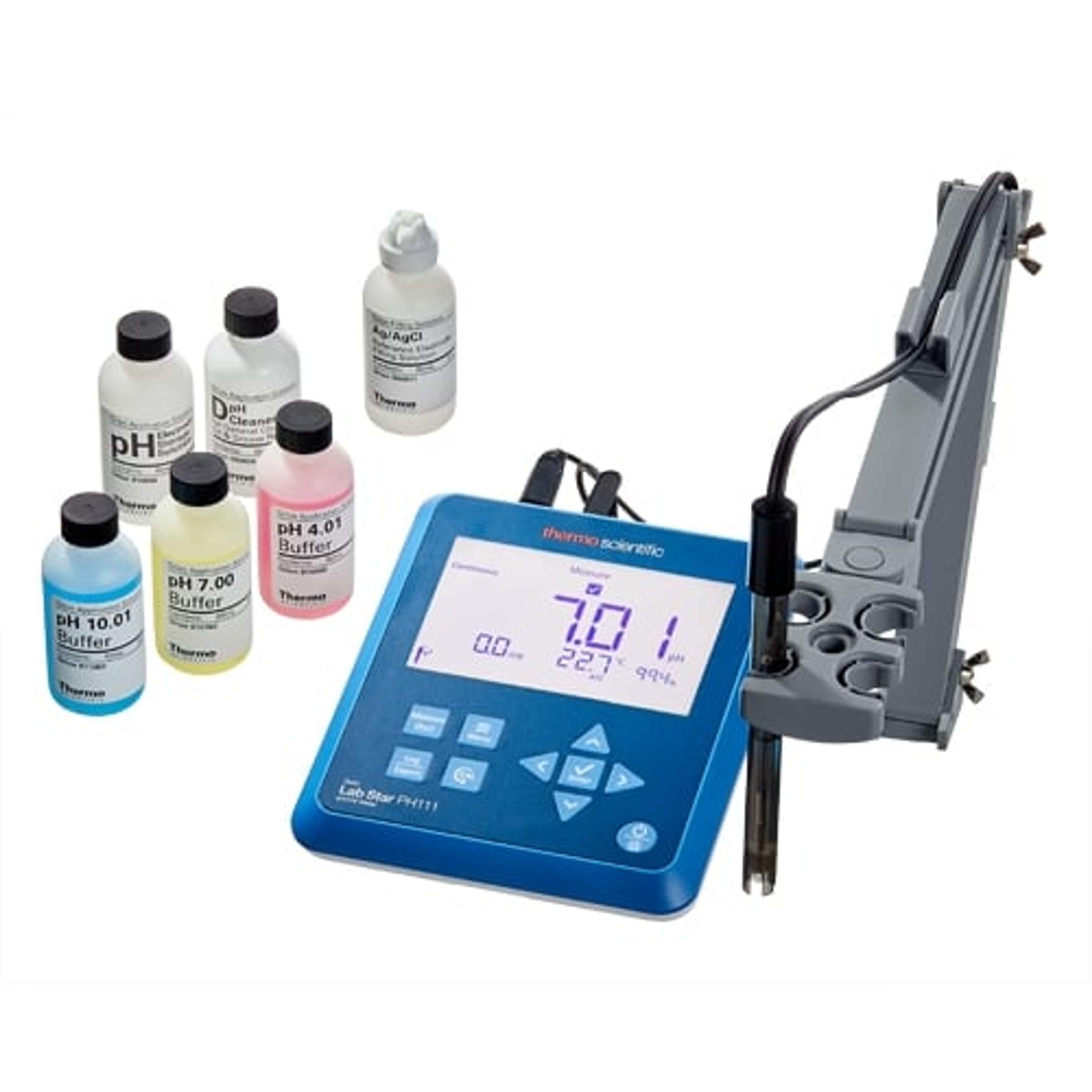How to create a pH measurement SOP for increased reliability: An industry veteran shares expert tips
Do you need to find new ways to make pH measurements more reliable with SOPs? Find out what exactly to include in a pH measurement SOP
3 Jan 2023

Biological experiments rely heavily on the pH of buffers and samples. A small shift in the pH indicates a change in the acidity, but also adds an unaccounted variable to the data obtained. When reagents are prepared by different members of the lab or are stored for longer periods of time, pH values tend to drift. As such, having standard operating procedures (SOPs) specifically related to pH measurements upholds the quality of the experiments across the entire lab over many years of research projects. It is vital scientists use up-to-date technology and the latest tools, combined with this comprehensive pH measurement SOP for increased reliability.
While many labs have a ‘pH protocol’ placed next to pH meters, creating a thorough SOP takes a slightly different approach. It considers both the methodology of conducting accurate pH measurements, as well as troubleshooting in different scenarios.
In this exclusive SelectScience® interview, we speak with industry veteran, Ricki Hartwell, Senior Global Product Manager at Thermo Fisher Scientific, who brings two decades of experience resolving common and uncommon pH pain points, and explains how to make pH measurements more reliable. Plus, Hartwell has also contributed to designing novel pH meters for the scientific market.

SOPs ensure that each person in the lab, whether they're a lab manager, a technician or an operator, are all using the exact same techniques for pH calibration and measurement.
Ricki Hartwell
Senior Global Product Manager, Thermo Fisher Scientific
The importance of pH measurement SOPs for reliability
SOPs are commonly seen in highly regulated biopharma labs, and are now becoming more commonplace in academic labs in an effort to achieve data and process reproducibility. “SOPs ensure that each person in the lab, whether they're a lab manager, a technician or an operator, are all using the exact same techniques for pH calibration and measurement,” says Hartwell. “This is done so that all the different parameters that could affect the measurement are kept standardized to ensure that the reported results are consistent, accurate, and precise.”
Ideally, what should a pH measurement SOP contain?
“When labs develop SOPs for pH, we recommend that the science behind the measurement is fully explored and understood, so that the SOP addresses all the different factors that can negatively or positively affect the result obtained,” shares Hartwell.
pH measurements are often brushed off as a simple and routine task, even though they can have a significant impact on the lab’s overall data and can significantly impact on experimental repeatability. An SOP, therefore, needs to cover the various aspects of conducting a pH measurement, in order to make pH measurements more reliable. Hartwell continues: “There are a lot of different factors that influence pH values. For example, knowing whether the electrode is compatible with the sample, calibrating the pH meter and electrode with the correct pH buffers, making sure the sample value is bracketed with at least two buffers on either side, understanding what an average slope value means and what it should be for a good calibration, to name a few.”
There are a lot of different factors that influence pH values. For example, knowing whether the electrode is compatible with the sample.
Ricki Hartwell
Senior Global Product Manager, Thermo Fisher Scientific
In general, labs should aim to include the following in their pH measurement SOP:
- Instrument setup: Instructions for electrode and pH meter setup, along with a list of confirmation and error messages appearing on the screen
- pH calibration: Steps to prepare before calibration and the detailed pH calibration procedure
- Sample measurement: Sample prep steps and pH measurement procedure
- Troubleshooting: The different types of errors typically encountered and how to go about resolving them
“Proper electrode calibration is essential for a good measurement. Yet, a lot of people underestimate the importance of calibration,” notes Hartwell. “If electrodes aren’t properly calibrated, all of the results obtained after that could be questioned. Prioritizing electrode calibration ensures that the results reported are going to be accurate and believable, and any experiments performed thereafter are valid.”
Common challenges that scientists face with pH measurements
“A lot of scientists may not fully understand why they're taking a pH measurement or what's really happening when they take a measurement,” says Hartwell, summarizing 20 years of experience helping customers resolve pH issues. “Often, a pH electrode might be old or nearing the end of its lifetime and no longer reliable but is still producing pH results. In this instance, the problems faced with pH measurements are a direct result of the electrode’s condition and not the buffer preparation process.”
Our goal at Thermo Fisher Scientific is to make it as easy as possible for a scientist to use a pH meter during a busy day.
Ricki Hartwell
Senior Global Product Manager, Thermo Fisher Scientific
If pH measurements appear unstable, a good rule of thumb would be to clean the electrode and calibrate it. If this issue persists, it may be time for a replacement. When in doubt, reach out to customer support staff to troubleshoot and get recommendations on the next step. Hartwell continues: “When things are working well, scientists rarely need our support. But when things go wrong, it can cause delays for the entire research team. We have a technical support department, accessible via phone or email, that can walk you through any problem and offer as much or as little support as the situation demands.”
Key pH bench meter features to consider when purchasing or upgrading
Given that pH measurements often fall at the beginning of a long experimental method, simplicity and ease-of-use are, by far, are the most desired features. “Our goal at Thermo Fisher Scientific is to make it as easy as possible for a scientist to use a pH meter during a busy day and not get confused or worried about what's going on,” says Hartwell. “We design our pH meters by continuously testing them with actual customers in the field, taking their feedback and incorporating that into the end product.”
The Orion Lab Star pH bench meter was created in much the same way – to simplify operations for the scientist, improve efficiency, and make pH measurements more reliable. Each feature has been meticulously designed with the scientist’s experience in mind. The features highlighted below would qualify as a good-to-have list so that pH measurements remain hassle-free in the long run:

Operating a pH meter may be a routine task in most labs; however, it should also be a seamless part of working in a lab, requiring minimal effort, and helping scientists conduct robust and efficient experiments. To help achieve this, detailed documentation of the process through a solid pH measurement SOP can help to further streamline the process, so that scientists can spend more time on what matters most in the lab.

